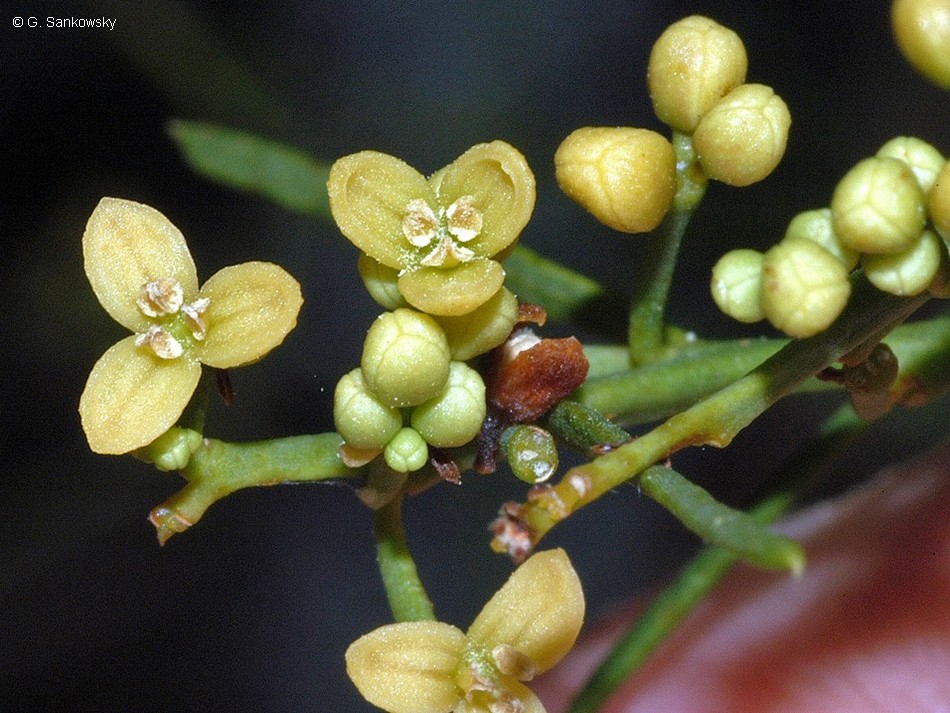Australian Tropical Rainforest Plants - Online edition
Anthobolus filifolius R.Br.



Brown, R. (1810) Prodromus Florae Novae Hollandiae : 357. Type: Northern Territory, coast opp. Groote Eylandt, 4 Jan. 1803, R. Brown; holo: BM; iso: K, G-DC, P. Fide H. U. Stauffer (1959).
Usually flowers and fruits as a shrub about 1-3 m tall.
Male flowers: Flowers in umbels or abbreviated racemes, up to five flowers per inflorescence, peduncle about 4-10 mm long, pedicels about 1-4 mm long. Tepals about 2 mm long. Female flowers: Flowers solitary or in 2-3-flowered umbels, peduncle about 5-20 mm long, pedicels about 5-20 mm long. Tepals about 1.5-2 mm long. Ovary cylindrical, about 1.5 mm long, stigma +/- 3-lobed. Ovules 1.
Fruits ellipsoid, about 5-9 mm long. Endocarp smooth or obscurely pitted. Embryo small, about 2.5-3 mm long, cotyledons about as wide as the radicle.
Features not available.
Endemic to Australia, occurs in NT, CYP, NEQ and CEQ. Altitudinal range from near sea level to 350 m. Usually grows in open forest and heathland but also found in beach forest, vine thickets and on the edges of monsoon forest.
May be parasitic on the roots of other plants.





